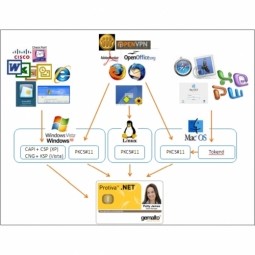Download PDF
BNBuilders Enhances Safety and Compliance Amidst Pandemic with Nintex
Technology Category
- Cybersecurity & Privacy - Security Compliance
- Sensors - GPS
Applicable Industries
- Education
- Life Sciences
Applicable Functions
- Quality Assurance
Use Cases
- Construction Management
- Onsite Human Safety Management
Services
- Cloud Planning, Design & Implementation Services
The Challenge
BNBuilders, a general contractor specializing in commercial construction projects, faced a significant challenge during the COVID-19 pandemic. With over 500 full-time employees and approximately 250 additional unionized employees working across California and Washington, the company needed to ensure the safety of its workforce amidst the pandemic. The West Coast of the United States, where BNBuilders operates, was hit hardest by the virus, leading to stay-home orders for all non-essential workers. However, construction was considered an essential business, and BNBuilders' clients still expected projects to be delivered on time. The company's crisis response team determined that a daily check-in form was needed for anyone visiting its offices and job sites. This form, based on CDC recommendations, would allow BNBuilders’ crisis and safety teams to monitor the risk of possible virus exposure and enable contact tracing.
About The Customer
Founded in 2000, BNBuilders is a general contractor that specializes in highly-technical commercial construction projects. The company’s clients include Fortune 500 organizations that are leaders in the life sciences, biotech, data center, healthcare, education, and technology sectors. BNBuilders has more than 500 full-time employees and, depending on their workload, approximately 250 additional unionized employees working from their job sites and their four offices across California and Washington. The company is onsite at approximately 150 active job sites each month.
The Solution
BNBuilders implemented a daily check-in form built on Nintex Workflow Cloud in just one day. The form, accessible via a QR code, included contact information, job site/office location, and COVID-19 risk-related questions. The solution needed to be flexible enough to update and change as quickly as recommendations from the CDC did. It also needed to be available in English and Spanish, and easy to access and complete to ensure adoption and compliance. The form was prepopulated with information based on the user's location. Staff and visitors completed their contact and emergency contact information, and then were asked a series of COVID-19 questions based on the latest recommendations from the CDC. Once submitted, all responses were saved to a SharePoint online list and monitored through a Power BI dashboard by the safety and crisis teams.
Operational Impact
Quantitative Benefit
Related Case Studies.

Case Study
Corporate Identity Solution Adds Convenience to Beckman Coulter
Beckman Coulter wanted to implement a single factor solution for physical and remote logical access to corporate network. Bechman Coulter's users were carrying smart card badges for doors, but also needed a one-time password token to access to our corporate network when they were not in the office. They wanted to simplify the process.

Case Study
IoT platform Enables Safety Solutions for U.S. School Districts
Designed to alert drivers when schoolchildren are present, especially in low-visibility conditions, school-zone flasher signals are typically updated manually at each school. The switching is based on the school calendar and manually changed when an unexpected early dismissal occurs, as in the case of a weather-event altering the normal schedule. The process to reprogram the flashers requires a significant effort by school district personnel to implement due to the large number of warning flashers installed across an entire school district.

Case Study
Embracing Business Success in Real Time
· Increase control over growing Big Data to improve business decisions · Manage data for 28,000 biotechnology stockkeeping units in the fields of microbiology, molecular biology, animal cell cultures, plant tissue cultures, and lab ware for laboratory chemicals · Accelerate report generation and analysis with real-time data

Case Study
Revolutionizing Medical Training in India: GSL Smart Lab and the LAP Mentor
The GSL SMART Lab, a collective effort of the GSL College of Medicine and the GSL College of Nursing and Health Science, was facing a challenge in providing superior training to healthcare professionals. As clinical medicine was becoming more focused on patient safety and quality of care, the need for medical simulation to bridge the educational gap between the classroom and the clinical environment was becoming increasingly apparent. Dr. Sandeep Ganni, the director of the GSL SMART Lab, envisioned a world-class surgical and medical training center where physicians and healthcare professionals could learn skills through simulation training. He was looking for different simulators for different specialties to provide both basic and advanced simulation training. For laparoscopic surgery, he was interested in a high fidelity simulator that could provide basic surgical and suturing skills training for international accreditation as well as specific hands-on training in complex laparoscopic procedures for practicing physicians in India.

Case Study
Implementing Robotic Surgery Training Simulator for Enhanced Surgical Proficiency
Fundacio Puigvert, a leading European medical center specializing in Urology, Nephrology, and Andrology, faced a significant challenge in training its surgical residents. The institution recognized the need for a more standardized and comprehensive training curriculum, particularly in the area of robotic surgery. The challenge was underscored by two independent studies showing that less than 5% of residents in Italian and German residency programs could perform major or complex procedures by the end of their residency. The institution sought to establish a virtual reality simulation lab that would include endourological, laparoscopic, and robotic platforms. However, they needed a simulator that could replicate both the hardware and software of the robotic Da Vinci console used in the operating room, without being connected to the actual physical console. They also required a system that could provide both basic and advanced simulation training, and a metrics system to assess the proficiency of the trainees before they performed surgical procedures in the operating theater.

Case Study
Edinburgh Napier University streamlines long-distance learning with Cisco WebEX
• Geographically dispersed campus made in-person meetings costly and inconvenient.• Distance-learning programs in Malaysia, India, and China required dependable, user-friendly online tools to maximize interaction in collaborative workspaces.• Virtual learning environment required a separate sign-in process, resulting in a significant administrative burden for IT staff and limited adoption of collaboration technology.





